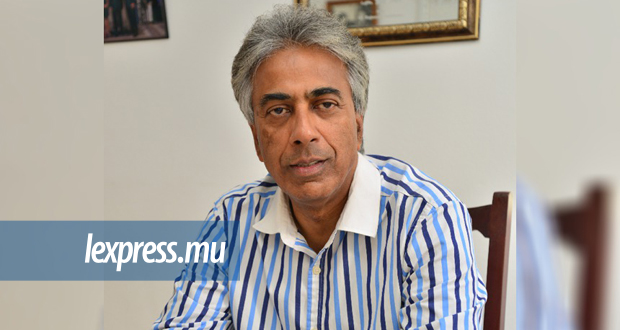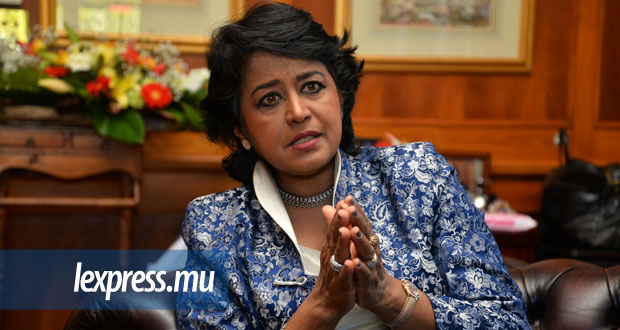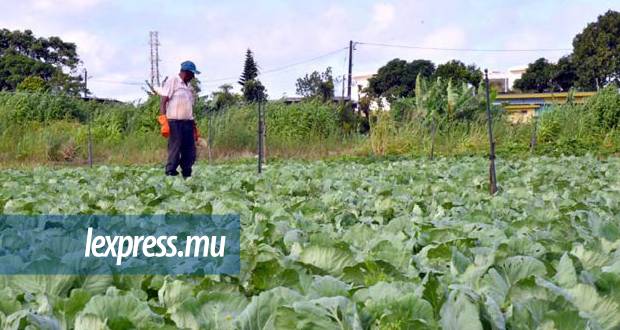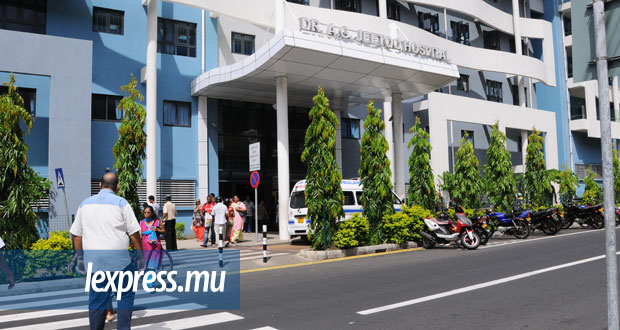Publicité
Vinaye Ancharaz: “It is easy to make claims without backing them up with facts and data.”
Par
Partager cet article
Vinaye Ancharaz: “It is easy to make claims without backing them up with facts and data.”

Several economic controversies are making the headlines, from the forecasted growth to the problems surrounding the Mauritius Investment Corporation. We sought the views of Vinaye Ancharaz, economist, on all these issues. His opinions are bold and unambiguous.
“The MIC operates with 100% of public funds, so we have a right to know how our money is being spent. If it were using its capital honestly to invest in good projects, there would be no need to conceal any information.”
There are several contrasting views about the economic situation and the forecast for the coming year. What exactly is the picture, according to you?
I think most people agree that the economic situation is dire and that things won’t get better soon, especially as the pandemic rages on and the number of cases has spiked lately. Those who claim otherwise are either too close to the regime to think independently or are oblivious to the facts as they play out.
And how are these facts playing out in relation to the forecasted growth?
Well, a controversy has arisen recently, fueled by the government’s attempt to manipulate statistics. In a report released on 28th June, Statistics Mauritius forecasted GDP growth of 4.4% in 2021, with tourist arrivals of 165,000. A couple of days later, the growth figure was revised to 5.4%, without any accompanying explanation. In any case, this forecast is well below the 9% that the minister of finance so confidently brandished in the budget. The International Monetary Fund (IMF), on the other hand, puts the GDP growth estimate for 2021 at a modest 5%. It is clear that the government’s target of 9% is beyond reach.
How about unemployment? Which figure is the correct one?
A similar controversy hovers over that too. In December 2020, the official unemployment rate was 10.2%. For the first quarter of 2021, Statistics Mauritius reports a decrease in the unemployment rate to 9.8%. This figure was arrived at by reclassifying 65,000 workers as economically inactive rather than as jobless. Without this trick, the true unemployment rate would be 19.6% – that is, twice the reported figure of 9.8%! For comparison, the World Bank forecasts an unemployment rate of 10.9% for 2021. This augurs a dangerous trend.
An astounding figure of 650,000 tourists to visit the island over the next financial year was brandished in the budget. Statistics Mauritius increased its estimates of tourist arrivals from 165,000 to 365,000. How realistic are those predictions?
I am no tourism expert, but it is clear to me that it is pretentious to expect 365,000 tourists in the second half of 2021. The figure of 165,000 tourists looks more reasonable but even that may raise some eyebrows. How realistic it is will depend on how many flights our national carrier, caught up in a financial turmoil of its own, is able to operate along major routes, and how the pandemic evolves in the coming months. What we do know, however, is that the pandemic has negatively impacted several of the variables that determine tourist arrivals. It has reduced real incomes and hence the demand for travel; it has changed peoples’ priorities and shifted tourists’ preferences to short-haul destinations. All of these changes work against Mauritius.
More bad news for our public debt, then?
The national debt is another area that is rife with contradictions. In the 2021-22 budget, the public sector debt was projected to reach 95% of GDP in June 2021. In the meantime, however, the IMF has entered the scene and called the government to order. It exhorted the Exchequer to treat the Rs60 billion it received as grant from the Bank of Mauritius last year not as revenue but as a financing item in the 2020-21 budget. Subsequently, the Bank of Mauritius (BoM) stated that Rs32 billion would be accounted for as a grant and the remaining Rs28 billion as advance to the government against the Bank’s future profits. Adjusting for this advance takes the budget deficit from 0% to 16% of GDP according to the IMF and up to 20% if some other adjustments (e.g., the Rs5.6 billion paid to Betamax) are included. Consequently, the public sector debt is estimated to have reached some 104% of GDP in June 2021. For the fiscal year 2021/22, the budget deficit is projected at 5.2% of GDP and the public debt is expected to ease to 91% of GDP. However, in its Staff Report of June 2021, the IMF has cast much doubt on the 2021-22 budget figures. The Fund expects expenditure to increase and revenue to fall, blowing up the budget deficit to 10.6% of GDP as against the forecast of 5.2%. Under this scenario, the public sector borrowing requirement will increase substantially, and the public debt will level off at 100% of GDP at the end of June 2022. Hence, the government’s plan to put the national debt on a “downward path” is over-ambitious and miscalculated.
“To claim that the MIC alone saved 120,000 direct and indirect jobs, that is, over 20% of total employment, is rather far-fetched. And it clearly does not stand up to the data. Between December 2020 and March 2021, according to official statistics, 56,000 jobs were lost in the formal sector. Including job losses in the informal sector could bring the tally to more than 100,000!”
But the national debt is mostly contracted domestically. Is it still a worry?
Well, the risk of a foreign exchange shortage compromising our debt obligations is rather low. However, the government’s ability to borrow is not infinite. As the public debt mounts, creditors become increasingly nervous and may demand a premium to hold new debt as the perceived risk increases. This will cause debt service payments to swell, diverting critical resources away from development priorities. On the other hand, a steadily-rising national debt may lead to the country’s credit ratings being further downgraded, which would reduce its attractiveness to foreign investors. Finally, a government cannot run a perpetual Ponzi scheme, issuing new debt to pay back maturing debt. At some point, it will have to find viable sources of revenue to support its spending and pay its debt. Accordingly, some economists subscribe to the theory of Ricardian Equivalence – the idea that higher debt today means higher taxes in the future.
One of the sources of revenue today is the Bank of Mauritius which has opened its vaults to the government to help itself as it pleases. Is that out of line or acceptable in the circumstances?
Exceptional circumstances call for exceptional measures. Indeed, central banks around the world have stepped in to help their governments deal with the economic crisis unleashed by the Covid-19 pandemic. They have slashed policy rates, lowered reserve requirements, extended much-needed liquidity to cash-strapped businesses, called on commercial banks to restructure loans or temporarily freeze interest payments and supported exporters through soft currency depreciations. The Bank of Mauritius has implemented several of these measures. However, I have not come across any case of a central bank opening its vaults to the government. This is tantamount to ‘helicopter money’, that is, printing money to finance government spending. In Mauritius, the BoM “grant” of Rs60 billion has caused the monetary base to expand by some 40%, fueling the present-day inflationary pressures. There is a perception in the public that the BoM is subservient to the Treasury, and that it will provide the government with however much it needs from its vaults.
Isn’t there a limit to how much the government can help itself to the Bank reserves?
Fortunately, there is a limit to the plundering of reserves. After transferring Rs60 billion to the 2020-21 budget and Rs80 billion to the Mauritius Investment Corporation (MIC), the BoM is running rather low on reserves. Moreover, the BoM cannot escape the IMF’s constant scrutiny. The IMF remains the ultimate bulwark against the unscrupulous practices of central banks.
Who cares about the IMF? Even when it alluded to the central bank’s lack of credibility and clearly stated that it ‘should refrain from providing direct financing to the government’ and running a private company like the MIC, the former chairman of the MIC, Lord Desai, retorted in an interview in Mauritius Times that he did not care what the IMF thinks of the company as long as it does the job it was set up to do…
I was surprised by Lord Desai’s outburst against the IMF. As an economist, I don’t always support all that the IMF and, for that matter, the World Bank, say or recommend. In this particular instance, however, the IMF’s position is totally justified. Although the IMF’s view might have been motivated partly by the need for greater transparency in the conduct of the central bank’s business, I believe the overriding concerns were that running a parallel company would distract the BoM’s attention from its primary role of a regulator and conductor of monetary policy.
Yet, the BoM carried on with its business as usual, like financing government budget, didn’t it?
The central bank’s financing of the 2020-21 budget was a major factor in Moody’s decision to downgrade the country’s rating last March. The IMF also advised against the BoM running a private company – the MIC – since it was in clear violation of the fundamental mandate of a central bank. It recommended that the MIC be operated by the government. This would have made it accountable to parliament. However, the BoM chose to ignore the IMF!
Will flouting the guidelines of the IMF have any consequences on our economy?
Yes, it may have adverse consequences on our economy. It goes to confirm the extent of institutional rot that continues to buffet the country; it makes investors nervous and it may trigger another downgrade of our credit rating. And lest we forget, we still need the IMF’s lending facilities and we look to it as a lender of last resort.
Forget about opacity and the Bank having no business running a private company. Did the MIC manage to save the 30,000 direct jobs and 90,000 indirect jobs the minister of finance claims it did?
It is easy to make claims without backing them up with facts and data. Perhaps the minister is referring to jobs in the tourism and hospitality sector, which has borne the brunt of the pandemic. However, not all companies in this sector have received equity investments from the MIC. On the other hand, the Wage Assistance Scheme and the Self-employed Assistance Schemes have also supported employment in affected industries. Yet, despite such assistance and despite receiving aid from the MIC, there have been reports of several companies closing down.
Do you mean these schemes didn’t work?
They didn’t. I won’t dispute the fact that the MIC’s cash injections in troubled companies could have saved them from certain death. However, to claim that the MIC alone saved 120,000 direct and indirect jobs, that is, over 20% of total employment, is rather far-fetched. And it clearly does not stand up to the data. Between December 2020 and March 2021, according to official statistics, 56,000 jobs were lost in the formal sector. Including job losses in the informal sector could bring the tally to more than 100,000! So, it is clear that neither the MIC nor the government’s other policy responses to the crisis has managed to save any significant number of jobs.
If the MIC did not save that many jobs, it certainly saved opacity and added yet another controversy, didn’t it?
Yes, the MIC saw the day in June 2020 amid much controversy – not just because the Rs80 billion of capital injected into this Special Purpose Vehicle was drawn from the central bank’s reserves but also because, as a private company, the MIC would not be answerable to parliament. These fears were justified then and today’s events have proved them right. The MIC operates with 100% of public funds, so we have a right to know how our money is being spent. If it were using its capital honestly to invest in good projects, there would be no need to conceal any information. In fact, the MIC would then be proudly announcing how its investments were saving or creating jobs while advancing the economy. The fact that it chooses to hide conveniently behind a confidentiality clause only fuels suspicion of cronyism, if not outright looting of public money.
Lo and behold, one crony by the name of Avinash Gopee seems to have benefited from at least Rs500 million for a company that he only recently set up. How do you explain that?
The MIC’s mandate is to invest in existing businesses with turnover exceeding Rs100 million that were facing hardships as a result of the pandemic. Technically, a newly established business should not qualify. In this particular case, from the snippets of information that I’ve gathered from the press, it appears that a colossal sum of money is being given away to a group that is doing rather well. Moreover, its main line of business – construction and real estate development – is not a priority for the MIC, nor for the economy. More disturbing are rumours that the investments were approved by the MIC’s board when the Investment Committee had rejected the application.
The argument coming from the government side is almost that the Rs80 billion given by the central bank to the government form the foreign exchange reserves were almost wasting their time in the vaults of the Bank and bringing nothing to the country. Why have other countries not discovered this recipe?
If other countries have not discovered this recipe, as you call it, it’s simply because it is not a recipe at all! Foreign exchange reserves may be sitting idle in the central bank’s vaults but they serve an important purpose nonetheless. Imagine a commercial bank lending out all its deposits and having no money in its tills to meet a customer’s request for cash. This may lead to a loss of confidence in the bank and trigger what is called ‘a run on the bank’, causing it to collapse.
What purpose do the reserves serve?
The central bank’s reserves serve at least two important functions. First, they allow the Bank to maintain a competitive exchange rate and to defend the currency against external pressures. Second, they help ensure that foreign exchange is available to meet the demand by importers and investors. Drawing down on reserves or using them for other purposes – such as investing through the MIC – will make it harder for the BoM to maintain the external value of the rupee and for the country to meet the public’s demand for foreign exchange. This will cause the rupee to depreciate further, reduce imports and make them more expensive, and ultimately put the country at the mercy of… the IMF!
How is our foreign exchange situation then?
Officially, the rupee is convertible on both the current and capital accounts. This means that anyone who needs foreign exchange for an approved transaction should be able to obtain it. However, the country is facing a growing shortage of foreign exchange as tourist arrivals are yet to take off and exports remain on a declining trend. The continuous depreciation of the rupee is a clear reflection of this fact. Under such conditions, some form of exchange control may be in place – if not already, perhaps in the near future.
The Contibution Sociale Généralisée is still making huge waves and a tug of war between the government and the private sector. Where do you stand in relation to that?
In brief, I believe that the CSG is a tax in disguise – and all the elements are there to prove it! First, contributions paid under the CSG go to the budget rather than into a savings fund like the National Pension Fund. Second, the fact that the rates are set at 1.5% and 3% for those earning below or above Rs50,000 respectively gives the CSG the cachet of a progressive tax. Third, it will hit all workers, whether in formal or informal employment. Fourth, the benefit that an employee will eventually derive upon retirement does not increase proportionally with the amount paid in contributions.
It seems to hurt employees then. Why is the private sector protesting so vehemently?
The private sector is right in protesting against it. For one thing, the CSG, which imposes a “tax” of up to 6% on the employer, is coming at a time when businesses are reeling from the effects of the pandemic and no end is in sight. It will raise operating costs and erode firms’ competitiveness. The timing couldn’t be worse! On the other hand, in its actual form, the CSG perpetuates the class divide between private-sector and government employees. The fact that the government will foot the bill for civil servants means that private-sector employees, including those in precarious employment, will indirectly be paying for public-sector workers, who are already lavished with perks and a kind of job security that most private-sector employees yearn for.
But wasn’t some reform of the pension necessary?
Pension reform is critically needed as the population ages. However, the proposed reform does not do enough to ensure the sustainability of retirement pensions. In the end, the CSG appears more like a strategic tool that would allow the government to deliver its electoral promise of BRP at Rs13,500 and treat public officers as bank votes, as has been the tradition, than anything else.
What is the economic outlook for Mauritius?
For 2021, the IMF forecasts a GDP growth rate of 5%, which I subscribe to. This is higher than the average 4% growth that we had got used to before the pandemic, but after a steep decline of more than 15% in 2020, it is hardly any cause for celebration. What I’m more worried about is that the government has run out of ideas about how to stimulate the ailing economy. Beyond massive investments in drains and expectations of 650,000 tourists in the next financial year, the 2021-22 budget proposed little else. And to make matters worse, the private sector seems to have slipped into a slumber of its own: the little appetite for risk that existed before the pandemic seems to have evaporated. Recent foreign investments have continued to flow into the real estate sector. So it is high time incentives were revisited and overhauled.
Publicité
Les plus récents






